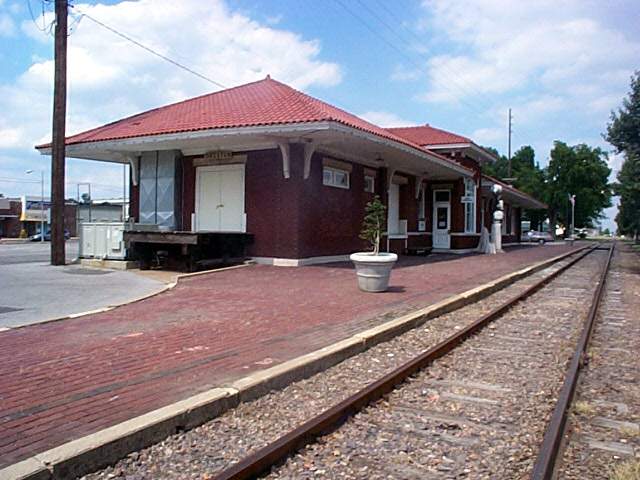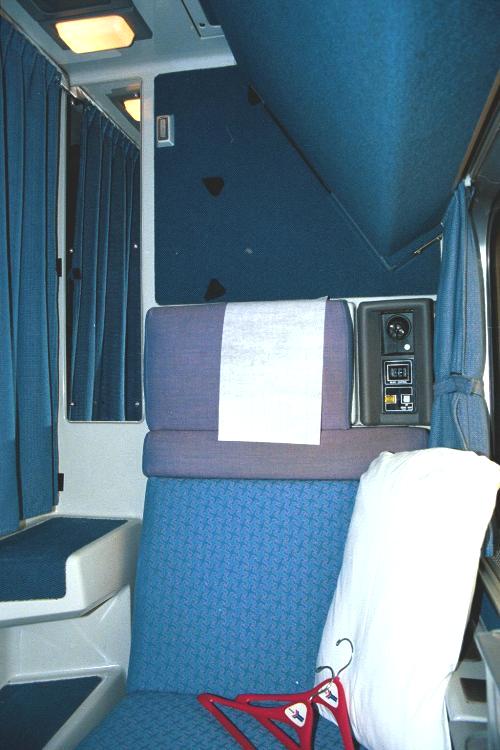I just learned that my flight from Newark will be departing fifty-five minutes late, up from a half-hour when I arrived at the airport. I’m too tired to be irritated, especially since I learned long ago that no matter what may happen along the way, it’s going to take me at least nine hours to get from New York to Smalltown, U.S.A. Getting to the airport from the Upper West Side, flying from the New York area to St. Louis, traveling south by shuttle bus from there to Smalltown…that’s a full day’s travel any way you slice it, and most of it is destined to be wasted.
I can burn off a certain amount of time doing a certain amount of work now that I travel with a wireless-equipped MacBook, but while I’m capable of doing serious writing on a plane or in a departure lounge if absolutely necessary, what comes out in the absence of the spur of necessity tends not to be very good. So more often than not, I spend a significant part of the day standing in lines, looking out airplane windows, and pretending to read.
 Would that it were possible to take a train from New York to Smalltown, but the last passenger train to stop in my hometown pulled out of the station more than forty years ago, and the old depot is now a museum. I love trains, so much so that I took a sleeper from New York to Chicago three years ago just so that I could write about it for The Wall Street Journal. Now that I’m cooling my heels in Newark, it strikes me that you might enjoy reading that piece–I know I would–so here is “Sleepless on the Lake Shore Limited.”
Would that it were possible to take a train from New York to Smalltown, but the last passenger train to stop in my hometown pulled out of the station more than forty years ago, and the old depot is now a museum. I love trains, so much so that I took a sleeper from New York to Chicago three years ago just so that I could write about it for The Wall Street Journal. Now that I’m cooling my heels in Newark, it strikes me that you might enjoy reading that piece–I know I would–so here is “Sleepless on the Lake Shore Limited.”
For the record, the dateline, which I wrote with the utmost pleasure, was Between New York and Chicago.
* * *
I grew up dreaming of long-distance trains. They were in the songs I loved (“I took a trip on a train/And I thought about you”) and the movies I watched (“I tipped the steward $5 to seat you here if you should come in”). Their tracks criss-crossed the main street of the small Missouri town where I spent my childhood, and their braying whistles cleaved the night air as they carried sleeping strangers to places I’d never been.
Alas, the highways and airlines were killing off passenger trains long before I figured out exactly what Cary Grant wanted to do to Eva Marie Saint on the Twentieth Century Limited. By the time I was old enough to travel alone, I took it for granted that I’d never spend a night in a sleeper car, watching the world rumble by. So when the Department of Homeland Security raised America’s alert status from yellow to orange a few days before I had to fly from New York to Chicago to look at plays, it struck me that this might well be my last chance to satisfy a longtime craving. I tore up my plane ticket, paid a visit to www.amtrak.com, booked a Viewliner Standard Bedroom on the Lake Shore Limited, and prepared to find out what I’d been missing all these years.
 Robert Frost once wrote a poem about a songbird whose autumnal task was to tell his listeners “what to make of a diminished thing.” As I laid eyes on the cramped roomette in which I would be spending the next 20 hours, I knew that would be my job as well. A Viewliner Standard Bedroom stuffs two seats, a toilet and a foldaway sink into slightly more than 23 square feet of floor space, about the size of an Upper West Side walk-in closet. If you want a compartment similar in size to the one in which Grant wooed Saint in “North by Northwest,” you’ll have to shell out a lot more. (I paid $684 for my round-trip fare between New York and Chicago, meals included.)
Robert Frost once wrote a poem about a songbird whose autumnal task was to tell his listeners “what to make of a diminished thing.” As I laid eyes on the cramped roomette in which I would be spending the next 20 hours, I knew that would be my job as well. A Viewliner Standard Bedroom stuffs two seats, a toilet and a foldaway sink into slightly more than 23 square feet of floor space, about the size of an Upper West Side walk-in closet. If you want a compartment similar in size to the one in which Grant wooed Saint in “North by Northwest,” you’ll have to shell out a lot more. (I paid $684 for my round-trip fare between New York and Chicago, meals included.)
The train slipped smoothly out of New York’s Penn Station at 2:50 p.m., right on time, and within minutes we had popped out of the tunnel and were rattling northward along the Hudson River. That was when I understood why people still take sleepers. The windows in each compartment are huge, the view transfixing. I scarcely noticed that the compartment itself was shabby and rundown, or that the miniature TV on which Amtrak invited me to view “Seabiscuit” and “Pirates of the Caribbean” was out of order. I’d brought along a laptop, a DVD of “Strangers on a Train” and several books, but I spent every spare minute of daylight gazing out at bleak brown hills, ice-flecked brooks, tiny cemeteries and stations with names like Cold Springs and Breakneck Ridge, all made beautiful beyond imagining by the golden winter sunset.
The red carpets and fresh flowers of yesteryear are long gone, but Amtrak’s cheerful porters do their best to pretend that things are what they used to be, and the dining car still serves its perfectly edible hot meals on china and white linen, seating strangers together in the snug booths. I didn’t run across any footloose Hitchcock blondes, but I did meet a lot of nice fellow travelers, most of whom could be divided into four groups: train buffs, fearful flyers, grumpy Europeans who’d expected something fancier, and senior citizens who’ve been taking the train for a half-century and aren’t about to quit now. Except for the Europeans, all were friendly and talkative.
 The porter made up my hard, narrow berth after dinner. It was so uncomfortable that I barely slept, but I didn’t care. Instead, I looked at the twinkling lights of the small towns of New York, Pennsylvania and Ohio, and as the whistle blew, I thought, I’m riding one of the trains I dreamed about when I was a boy. This is the whistle that made me wonder what the rest of the world was like–and now I know.
The porter made up my hard, narrow berth after dinner. It was so uncomfortable that I barely slept, but I didn’t care. Instead, I looked at the twinkling lights of the small towns of New York, Pennsylvania and Ohio, and as the whistle blew, I thought, I’m riding one of the trains I dreamed about when I was a boy. This is the whistle that made me wonder what the rest of the world was like–and now I know.
We pulled into Union Station an hour late. I caught a cab to the Art Institute of Chicago to see “Manet and the Sea.” The driver sang along with Louis Armstrong and Ella Fitzgerald on the radio, and I sang along with him, unshowered, underslept and glowing with happiness. Train travel may not be what it used to be, and it definitely costs too much to do more than occasionally. But if you want a sweet taste of what America was like in a slower, quieter age, book a bedroom on the Lake Shore Limited. You can always sleep at home.
Terry Teachout on the arts in New York City
